The very first project I undertook in the condo was repairing and painting the bedroom walls. When I first moved in, the entire bedroom was painted a nauseating, algae green color. Even the room’s shiplap wainscoting was inexplicably painted the same eggshell green as the walls. Waking up surrounded by this color made me feel like I was drowning in a bowl of split pea soup.
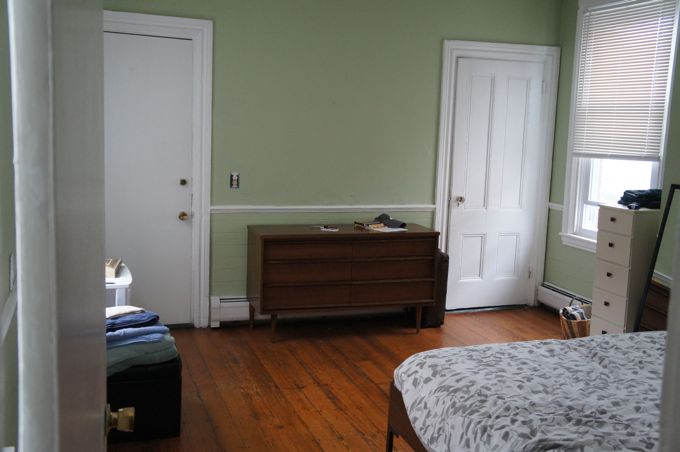 Clearly, the bedroom needed some fresh paint. But it turned out that this terrible color was just the start of the problems with the bedroom walls. Under the green paint there was a layer of textured wallpaper, and under the wallpaper was the original plaster. In many places, the walls felt soft and squishy. I didn’t know much about plaster walls at the time, but I was pretty sure they weren’t supposed to be squishy. After a little research, I discovered that the squishiness was a sign that the plaster was detached from the underlying structure of the wall.
Clearly, the bedroom needed some fresh paint. But it turned out that this terrible color was just the start of the problems with the bedroom walls. Under the green paint there was a layer of textured wallpaper, and under the wallpaper was the original plaster. In many places, the walls felt soft and squishy. I didn’t know much about plaster walls at the time, but I was pretty sure they weren’t supposed to be squishy. After a little research, I discovered that the squishiness was a sign that the plaster was detached from the underlying structure of the wall.
When the wall was originally constructed, wet plaster was pressed into the lath – a series of horizontal wood slats running across the studs and spaced about 1/4 inch apart. The wet plaster was smooshed into the gaps between the lath, and when it hardened, it was held against the lath by the ridges of plaster, or ‘plaster keys’, that filled these gaps. But as the building shifted and settled over time, some of the plaster keys broke, leaving large sections of the plaster wall floating unsecured. So before I could paint the room, I needed to strip the wallpaper and stabilize these loose sections of plaster.
Now, before I show you a bunch of frankly horrifying pictures detailing the process of repairing and painting the walls, here’s a picture of the room today.
Everything turned out ok. I opted for white paint – Benjamin Moore White Dove – for the walls. And I painted the wainscoting the same semigloss white as the trim. Everything is nice and clean and bright.
Anyway, back to the topic at hand. The first order of business was to strip the old wallpaper. There are a number of ways to strip wallpaper – steaming and scraping, or perforating and coating with stripping solution are two of the most common methods – and you can find plenty of youtube videos of people employing various wallpaper stripping methods and making it look easy. But I soon found that my wallpaper was particularly uncooperative. It was a thick, textured paper that had been covered in several layers of paint, and it wasn’t prepared to release its decades-old grip on the walls without a fight. Although it was loose and bubbling in places, it clung to the wall with unrelenting tenacity in others. In the end, I used a 5-in-1 painter’s tool and brute force to scrape the paper off of the wall. For the most part, the wallpaper came down in frustratingly tiny bits and pieces, but every once in a while a big, immensely satisfying sheet of paper would peel away from the wall all at once. As the wallpaper came down it left behind a film of ancient paper and adhesive residue that looked something like this.
I soaked the walls with DIF wallpaper stripper before scraping off these final, stubborn bits of paper and adhesive. As a side note, windshield washing fluid or soapy water is cheaper than the DIF stripper, and I’ve heard it works just as well.
Once all of the wallpaper was down, I could finally see the underlying plaster, and it didn’t look good. In fact, the whole room looked much worse than when I’d started. The plaster was cracked and crumbling in places. A few areas had been patched with plaster of paris that appeared to have been applied with a butter knife. There were even a few small holes where chunks of plaster had fallen out of the wall. I began to wonder if stripping the wallpaper and uncovering this mess had been a mistake, but there was no turning back now.
Repairing damaged plaster is slow, agonizing work. In many cases it’s more time consuming than tearing out a plaster wall and replacing it with new sheetrock. I never really considered this option because I really like old plaster walls – their trowel marks and other irregularities are part of the charm of an older house. Plaster also offers some practical advantages over sheetrock: it’s inhospitable to mold, provides superior sound insulation, and is more durable than sheetrock. And on top of everything, I wasn’t really in the mood to gut my bedroom since I was actually living in it at the time.
So I was stuck figuring out how to repair my crumbling plaster walls. As far as I know, there are two methods for repairing damaged plaster, both of which accomplish the same result of reattaching the plaster to the underlying lath. The first and most common method involves attaching the plaster to the lath using screws and special washers called plaster buttons, which distribute the pressure of the screw and prevent the surrounding plaster from cracking. The second method involves using construction adhesive to glue the plaster to the lath. In both cases, the wall needs to be patched and skim coated to a smooth finish after the plaster has been stabilized.
I came across this incredibly detailed and very helpful article on the adhesive method of plaster repair, and decided to give it a try. If you’re looking for a full break down of what was involved here, I’d recommend reading the article. But essentially, I drilled a bunch of little holes in the wall, injected construction adhesive into the holes with a caulk gun, and temporarily clamped the plaster to the lath with screws and washers while the adhesive dried.
24 hours later, once the adhesive had dried, I removed the screws and washers and patched the holes with plaster of paris. I also took this opportunity to patch some of the areas of missing plaster with more plaster of paris. With the plaster firmly glued to the lath, the walls no longer felt squishy, but they were still uneven and a little lumpy. To achieve a smooth, flat surface, I needed to apply a skim coat, or a thin finish coat, of joint compound to the entire wall.
But before I moved on to skim coating, I primed the walls with Gardz Sealer. Gardz has the consistency of watered-down Elmers Glue and dries to a hard, shiny surface. It seals in any leftover wallpaper residue and provides a stable surface for skim coating. It probably wasn’t necessary here, since I cleaned off the walls pretty well, but I wasn’t taking any chances. Next, I covered all of the cracks in the walls with fiberglass mesh tape. The idea here is that the fiberglass mesh isolates the finish skim coat from the underlying damaged plaster and prevents the crack from reappearing.
I used premixed, lightweight joint compound – the kind that comes in a bucket – to skim coat the walls. This was my first skim coating experience, and it took me a while to get the hang of it. The real breakthrough came when I started using the Magic Trowel, which, despite its name, cannot be used to build enchanted walls. In reality it’s nothing more and nothing less than a big, heavy-duty squeegee. I don’t possess the skill to manipulate plaster with an actual hawk and trowel. So instead, I applied a rough coat of watered-down joint compound to the walls using a drywall knife and a paint roller. And then, while the joint compound was still wet, I ran the Magic Trowel over the wall to smooth everything out and remove any excess joint compound. Here’s what the back wall of the bedroom looked like partway through this process.
I had to apply two coats of joint compound to get a smooth, flat surface. Once the final coat of joint compound was dry, I used a drywall knife to scrape off all of the little ridges and high points left behind by the Magic Trowel. Very little additional sanding was needed. I finished the skim coat by burnishing the raw joint compound. The process of burnishing the walls involved lightly dampening the dried joint compound with water from a spray bottle and running a drywall knife over the surface of the wall with firm pressure at a steep angle in an asterisk pattern – up, down, side to side, and diagonally. This process compressed the joint compound, and the result was a hard, smooth, slightly shiny surface that looks and feels a lot like the original plaster.
The whole process of repairing, patching, and skim coating the bedroom walls took me several months of working evenings and weekends. So by the time I was finally ready to paint the room, it felt like I’d reached the home stretch. I primed the walls with all-purpose water-based primer before applying two coats of paint. I’ve always thought that painting was tedious and boring, but at this point it was actually fun and satisfying, if only because it went so much faster than skim coating. After the walls and trim were painted, I disassembled all of the rusty, beat-up baseboard radiator covers, primed them with metal primer, and painted them to match the trim.
So here it is, the fully repaired and painted bedroom. The room still feels unfinished. The door on the left in the picture above leads to the building’s rear stairwell. It’s currently a cheap, hollow-core door, but I’m planning to replace it with the solid, four panel door that’s leaning against it in the picture. It’s the same panel door that was used to seal off the condo’s front room. I’d also like to reconsider the room’s layout and find some new nightstands. And maybe the bed needs a headboard? And of course we now have a lot of big, empty, immaculately smooth walls in this room that could use some artwork.
 I also replaced the overhead light fixture with this classy Art Deco shade I found on ebay. The fixture itself is from Schoolhouse Electric. Strangely enough, I’ve found that Art Deco stuff nicely complements my building’s Greek Revival architecture. Although the two styles were popular at very different times, they both emphasize bold linear designs.
I also replaced the overhead light fixture with this classy Art Deco shade I found on ebay. The fixture itself is from Schoolhouse Electric. Strangely enough, I’ve found that Art Deco stuff nicely complements my building’s Greek Revival architecture. Although the two styles were popular at very different times, they both emphasize bold linear designs.
One of my favorite aspects of the room is the floor. I had it refinished this past year and it turned out beautifully. It’s heart pine and each floor board runs the full length of the room. It reminds me of a ship’s deck. But the floor isn’t the only thing about the room that reminds me of a ship.
The bedroom is located in the back of the building, which juts out toward Boston harbor like the bow of a ship. Here’s the view out one of the bedroom windows. It’s a pretty impressive view, even though there’s a telephone pole in the middle of it. There are actually water views out the windows on either side of the bedroom, and these views of the harbor and the Boston skyline behind it are my favorite aspect of the room, and maybe my favorite part of the entire condo. I live in a quiet neighborhood, but it’s close enough to downtown that I can lie in bed at night and see the city lights out the window.
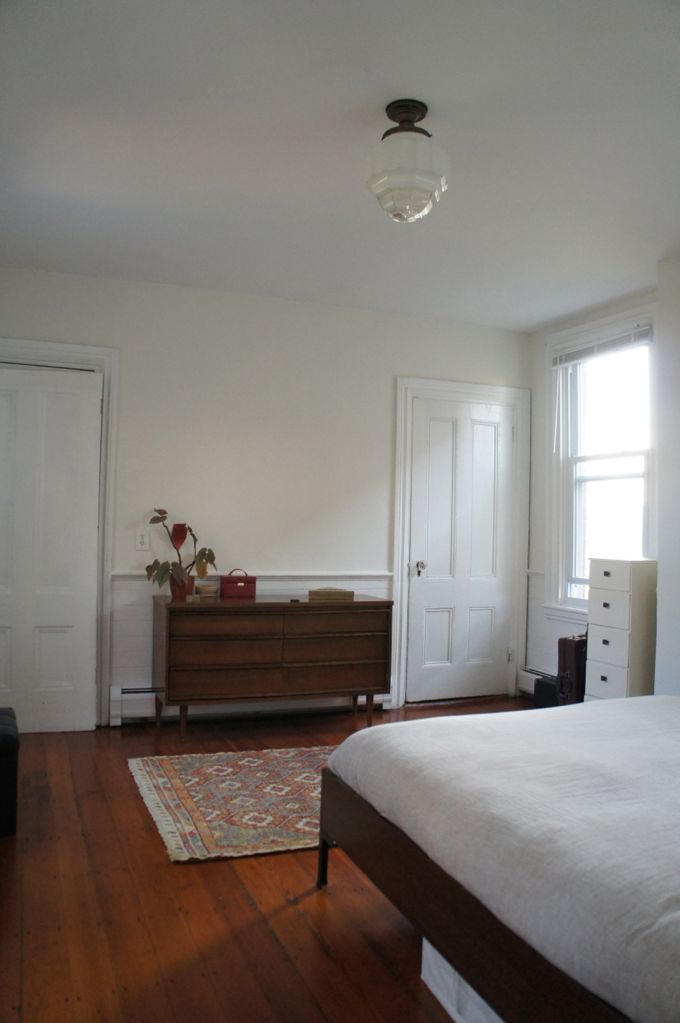
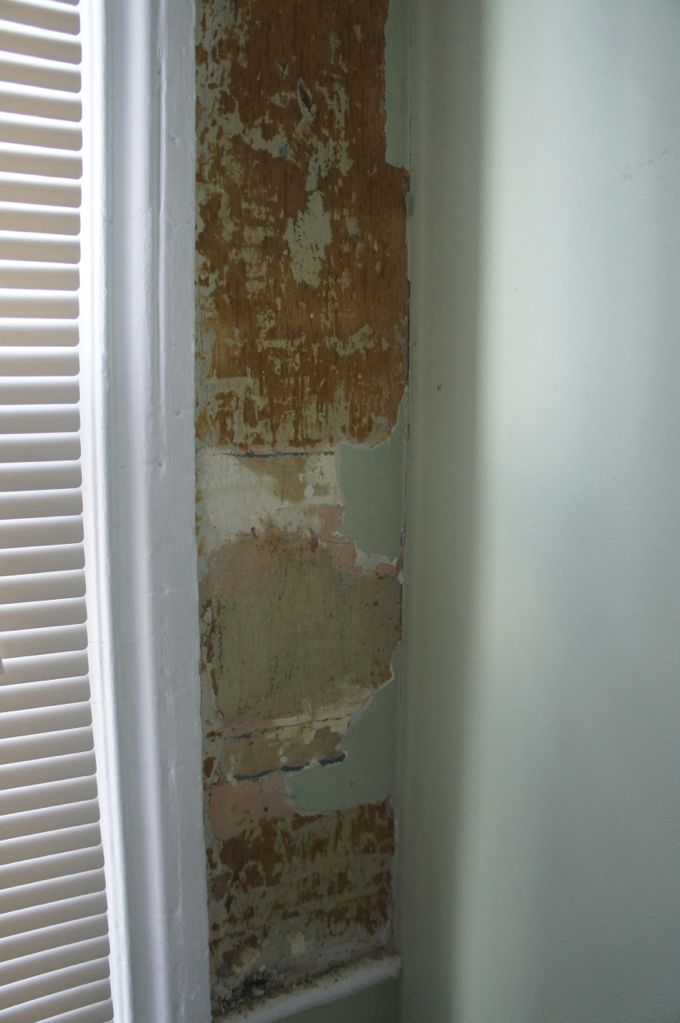
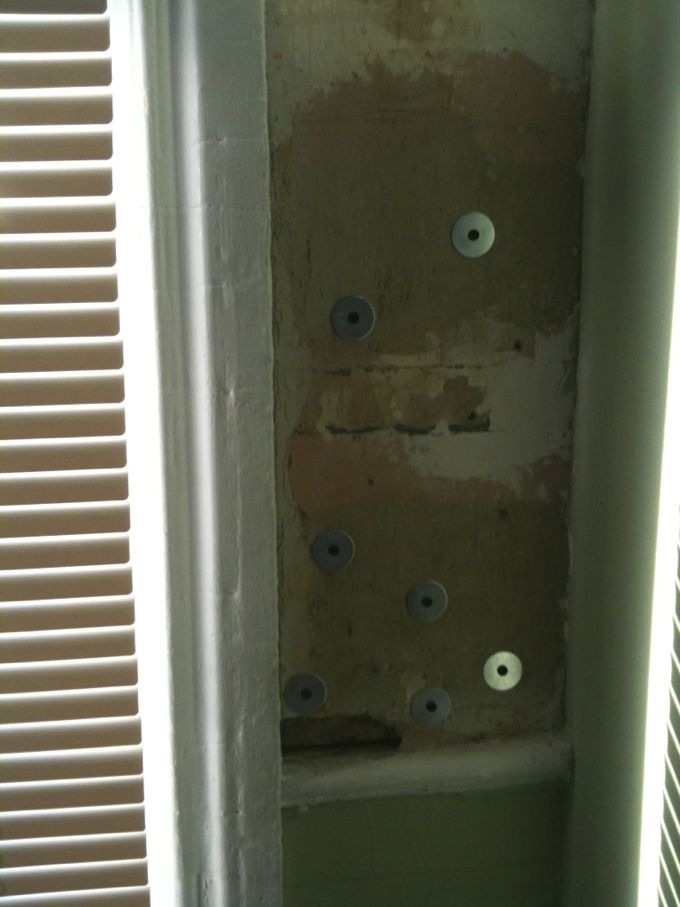
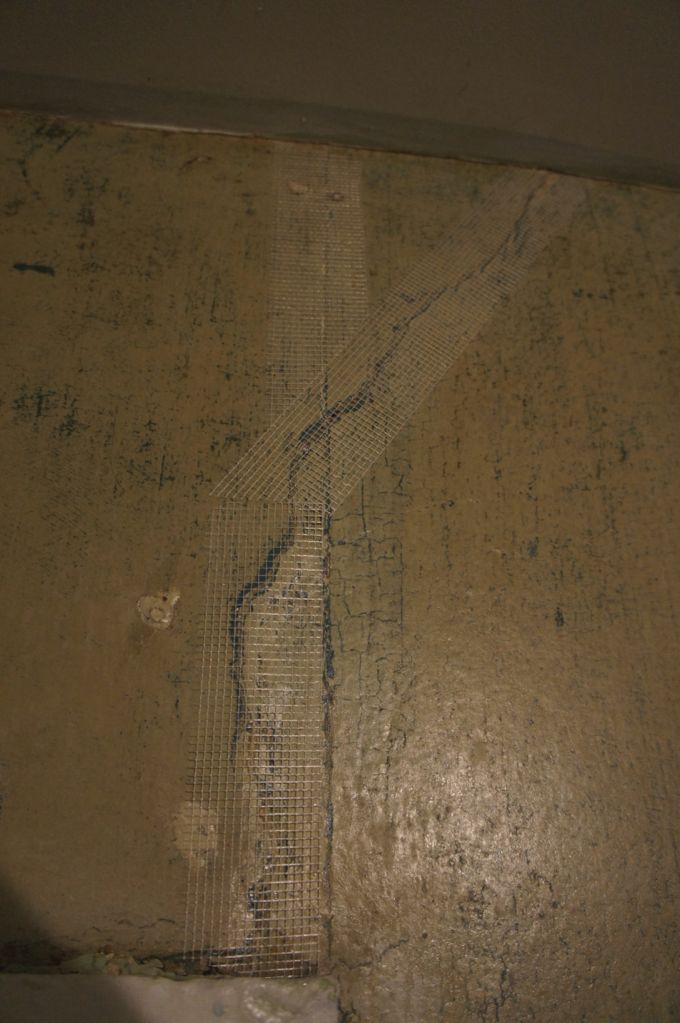
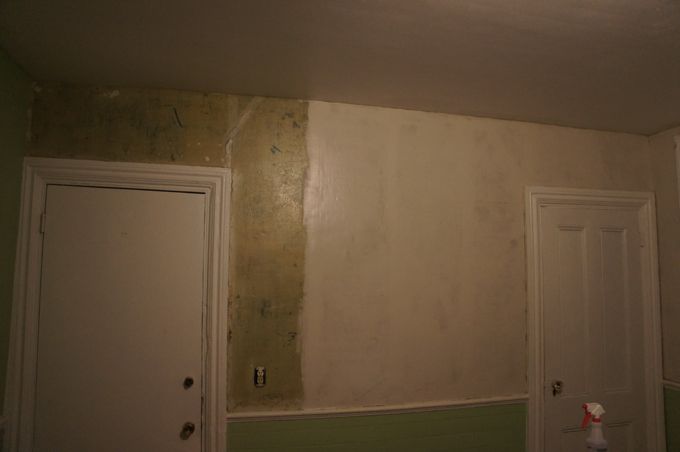
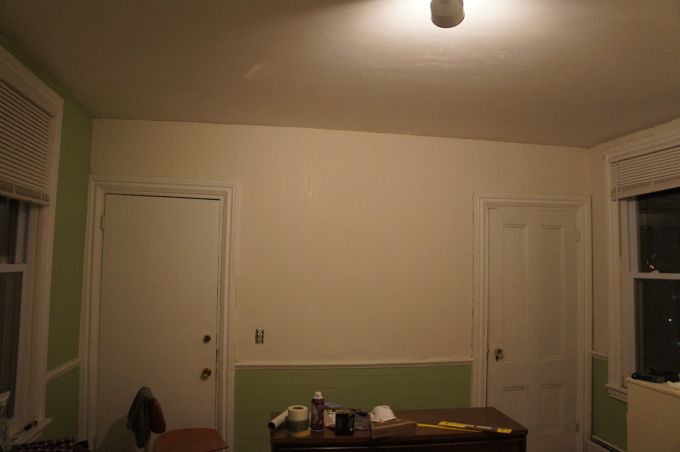
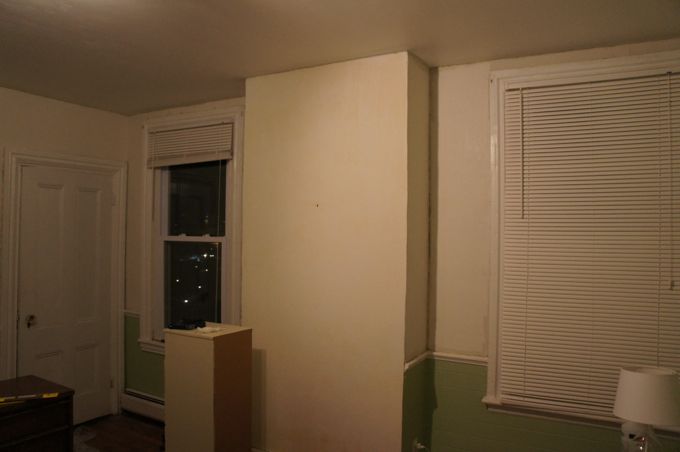
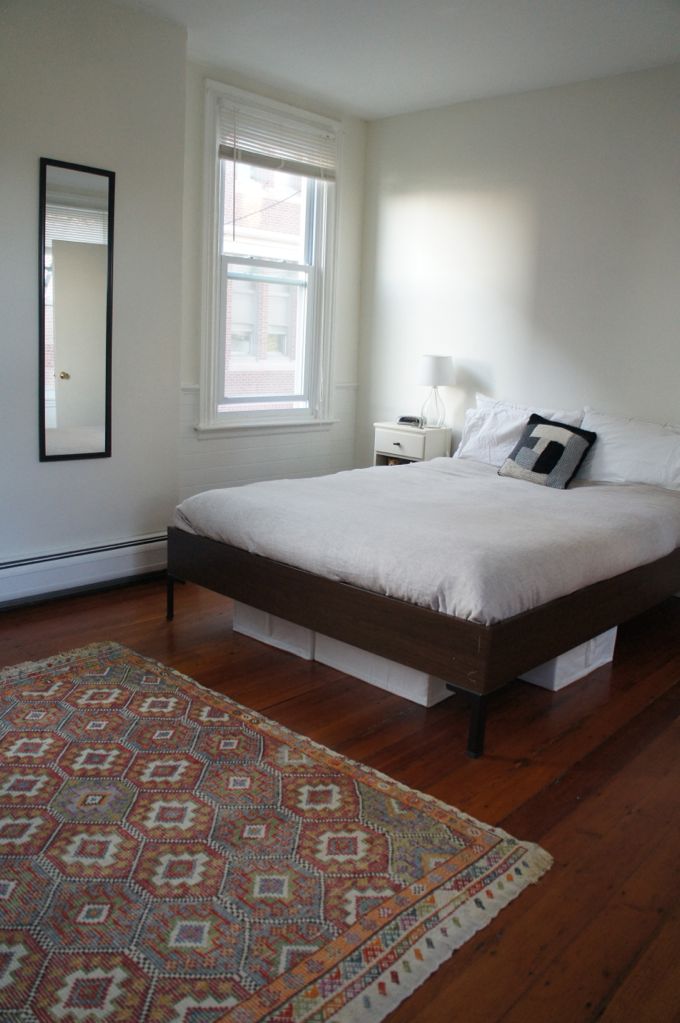
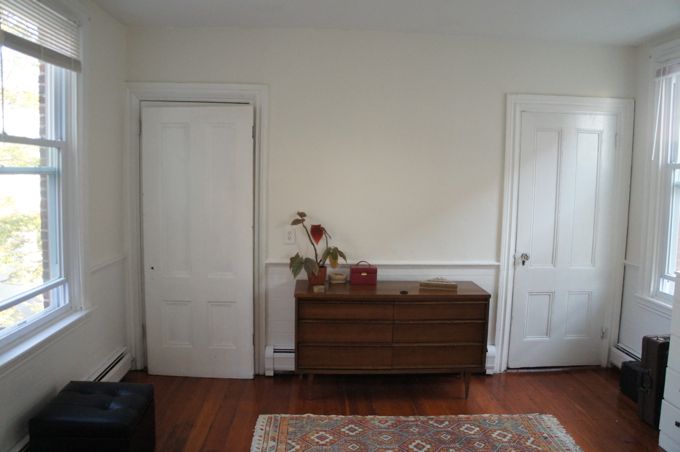
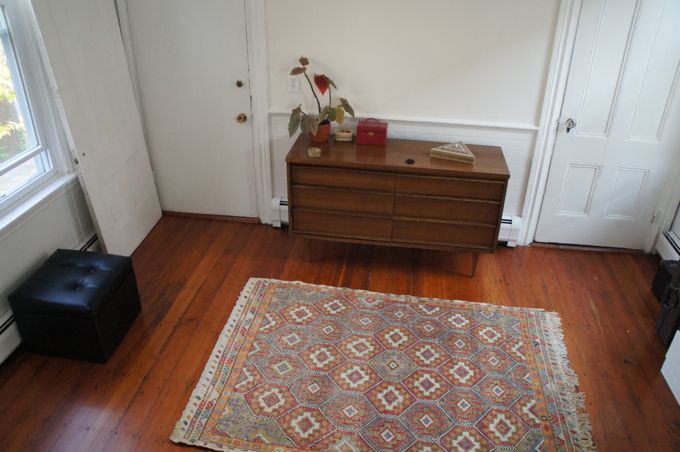


Wow, unbelievable!! What a perfect view.
Wow!!!! Great job. And I like the minimalist look too. Let it “settle in” to get a clear idea of what you want eventually. No rush.
Yes, great job, indeed! I agree with Jen about just living with the room a bit before you decide if you need to bring in more color or texture with things like window treatments and what artwork might work best for you on the walls. The place is really looking wonderful and how lucky are you to have that view of our city! Thanks for sharing.
Spectacular view and I absolutely love the rug. Where did you find the rug?
The rug is a vintage kilim from Turkey that I found on eBay a few years ago. There are actually lots of good deals to be had on rugs from Turkish and other Middle Eastern sellers on eBay.
I am so glad I happened across your blog. I love reading about all of your projects. They are all turning out amazing!
Thanks Sherri, glad to have you!
Your condo is lucky to have you. That was very interesting – we live in a 200 year old Irish farmhouse where our landlord has slapped wallpaper (and then painted it) over crumbling plaster. Not a good look and I’m itching to try something like this.
I love seeing how people make the place they live in really their home! I’m a huge fan of burnished walls, there’s something so very attractive and somehow … touchable about them.
The most hilarious thing for me is that I am planning to paint my bedroom a very similar green to your “before” bedroom – I hope it’s not going to be a pea soup experience. But I am going to paint my office (actually a corner of my kitchen) in the same colour, so I’ll find out about the possible peasoupness and can avoid it in my bedroom 🙂
I tend to dislike any wall colors in my living space that are not on the white-black-grayscale continuum. But I know not everyone shares this preference — including my girlfriend. I think brightly colored walls can look good, I just quickly get tired of them in my own space. So if you like the color and it looks good in your space I’d say go for it!
Wow Dan! I had no idea how beautiful your whole apartment was from following your kitchen reno on Apt Therapy. It is amazing! And I’m so incredibly impressed by all the work you’ve put in -we struggle to put a few pictures up! Really wonderful.
Also I really like the teak? sideboard. I’m currently looking for one. Re nightstands. I really like the “campaign” ones at Loaf in the uk. Maybe not available in the states but I think the shape would work well in your room. Or some mid century ones.
Well that nasty old green certainly photographed well, I thought the before picture was the after. But well done, the after is much better than the before that was already not so bad!
Oh, and that view is amazing!
Always a pleasure to see how you tackled your current condo problem. So well thought out and meticulous. You DO need ART in that space between the doors, though.
I love Art Deco so I hope to see a bit more of it on your blog! I also like the rug and the sideboard, though I am wondering if a second rug could look good next to the bed….How about a big black and white photograph over the sideboard?
Ahhh…so nice. The ‘before’ and ‘during’ pics make me want to hold my breath, but the after looks so peaceful. Great work. I’ve loved following along since you started your kitchen re-do.
Well done! My son and I both have Arts and Crafts era houses (so coming up on 100 years old now). We had to redo the ceiling in the nursery at his house and opted for the button washers as a permanent installation. I had never heard of the adhesive fix. Though for a ceiling, I think I’d still opt to leave the buttons in.
I’d need a bit of color in the space, even if it’s just a very pale tint – just to make that glorious woodwork stand out a bit more. I love your condo. If I ever sell THE Bungalow, I hope to find an older unit like yours.
And the views are lovely!
I admire the care and patience you are putting into creating a jewel of your home. Well done! You are an inspiration.
I was also thrilled that you can see out your window across the harbor to my son’s office. I’m sure that thrills you, too.
The color of this room is very magnificent. It’s so lovely and friendly to the eyes of everyone. Great idea for this kind of style for your bedroom. This will give every homeowner an idea on what to design for their own bedroom.